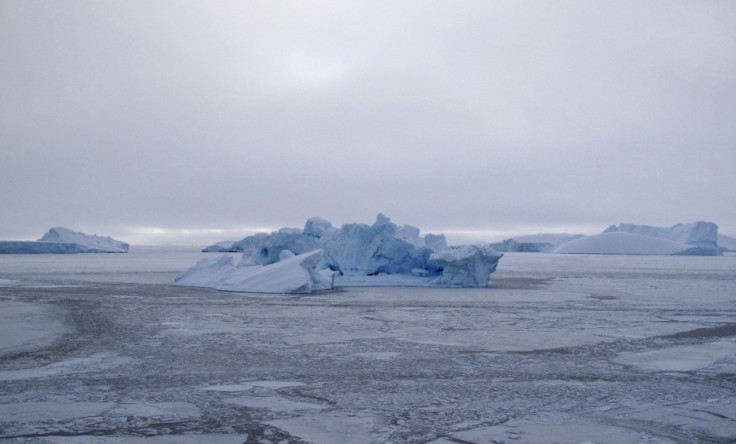Climate Change: Arctic Sea Ice Melting Twice as Fast as Models Predict

Arctic sea ice is melting twice as fast as previous climate models predict, decreasing from 52% to 48% between 1979 and the present day.
Researchers at the Scripps Institution of Oceanography, University of California, San Diego, studied 30 years' worth of satellite observations taken between 1979 and 2011.
They said the decline of the Arctic sea ice has been documented by satellites over the last 30 years and observations show a darkening of the Arctic seen through passive microwave observations.
According to the report, researchers found a strong relationship between Arctic sea ice and albedo – the ratio of reflected radiation upon it.
Sea ice helps to cool the Arctic by reflecting solar radiation back into space; its white colour helps reflect the radiation. For example a perfectly white surface will reflect back, while a black surface will not.
Fifty years ago, researchers predicted darkening of the Arctic, associated with disappearing sea ice, was a result of global warming. The research team used measurements to work out how much of the Arctic has darkened following the recent drop in sea ice.
"The analysis reveals a striking relationship between planetary albedo and sea ice cover, quantities inferred from two independent satellite instruments. We find that the Arctic planetary albedo has decreased from 0.52 to 0.48 between 1979 and 2011," they wrote.

"Averaged over the globe, the albedo decrease corresponds to a forcing that is 25% as large as that due to change in CO2 during this period, considerably larger than expectations from models and other less direct recent estimates.
"Changes in cloudiness appear to play a negligible role in observed Arctic darkening, thus reducing the possibility of Arctic cloud albedo feedbacks mitigating future Arctic warming."
Study co-author Ian Eisenman told Live Science: "Although more work is needed, a possible implication of this is that the amplifying feedback of Arctic sea ice retreat on global warming is larger than has been previously expected.
"There are a lot of questions right now as to why the ice is retreating as fast as it is, and why it has the structure that it has is a little hard to say. The cause and effects get subtle — ocean currents respond to sea ice and sea ice responds to currents."
Their report comes as experts say melting Arctic sea ice was to blame for the wavering jet stream which has, in turn, caused the extreme weather of recent weeks and months.
Jennifer Francis, from Rutgers University in New Jersey, said the jet stream took a longer and more wavering path than normal, which resulted in extreme weather over Northern Europe and North America. The researchers found this was caused by increased Arctic temperatures in part.
"This does seem to suggest that weather patterns are changing and people are noticing that the weather in their area is not what it used to be," she said.
"We can expect more of the same and we can expect it to happen more frequently."
© Copyright IBTimes 2025. All rights reserved.






















